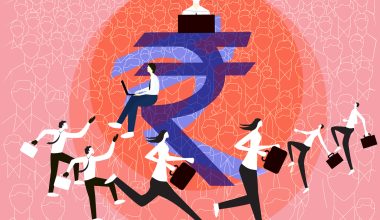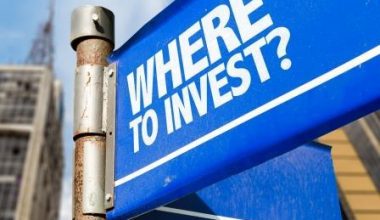Apart from GDP growth and corporate earnings, the single most important factor determining the market trend is the interest rate. Interest rates and stock prices are inversely related. As interest rate rises, more money will move to fixed income assets, adversely impacting stock prices. Since stock prices reflect the discounted present value of future cash flows, rising interest rates raises the discounting rate leading to decline in stock prices. The reverse is true when interest rates start falling. Importantly, markets start discounting earlier than the actual event. In other words, the discounting mechanism starts working when the market signals the peaking of interest rates. Peaking of interest rates will be followed by stagnant rates for a while and rate cuts later.
Seen from this perspective, it appears that interest rates have peaked or are near peaks globally as well as in India. This has implications for stock markets. Globally stock markets are highly correlated, and macroeconomic trends in the mother market US impact all other markets globally. During the last fourteen months the Fed has been on a massive rate hiking cycle – the most hawkish in the last 40-years. This savage monetary tightening was necessitated by the worst US inflation in the last 40-years. The Fed raised rates ten times in a row and currently the Fed funds target rate stands at 5 to 5.25 percent. High interest rates will slow down the economy which helps in containing inflation. Monetary policy acts with a lag, and this time the time lag appears longer. But the economy is slowing down, and inflation is declining. The US economy is expected to tip into a minor recession for a couple of quarters and then start rebounding. Inflation has declined from the peak of 9.1 percent to 5 percent in April but is much higher than the Fed’s target of 2 percent. But since the economy is Dr. V. K. Vijayakumar slowing down and the disinflation process is on, the Fed is likely to pause the rate hikes soon. The Fed chief Jerome Powell has given indications that they are “now in a position to wait for evolving data.” In the coming June meeting the Fed is likely to pause or, perhaps, go for one more rate hike and then pause. In brief, US interest rates have peaked. If the US economy slows down sharply and the disinflation process continues, the Fed may even cut rates by end 2023 or early 2024.
In India, the latest inflation prints indicate that the worst of inflation is behind us. For the first time in eighteen months, in April, the CPI inflation at 4.7 percent has come within the RBI’s tolerance limit. More importantly, the WPI inflation had slipped into negative territory, for the first time in 30-months. Anticipating the cooling of inflation, the MPC paused in April, and they have been proved right. In the June policy also the MPC is likely to continue the pause. If the evolving outlook and emerging data are supportive, the MPC may cut rates by end 2023. In brief, it can be safely concluded that interest rates have peaked.
What are the implications of peaking interest rates for markets? For investors now is the time to lock into fixed-income assets like debt funds and bank FDs. Equity markets are set to stage a rally in the second half of CY 2023. Rate sensitives like financials, real estate/construction and autos are likely to do well.







